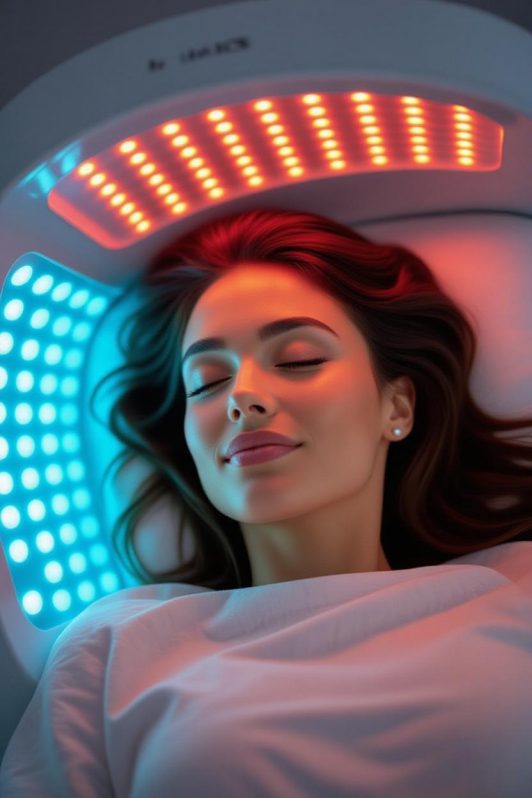 Modern interiors are embracing wellness technology as part of home design. Red light therapy beds and LED systems are no longer confined to clinics and spas. They are making their way into living rooms, bedrooms, and personal wellness corners. This shift is driven by a desire to combine aesthetics with health, creating spaces that feel both relaxing and rejuvenating. For those interested in red light therapy for pain relief, integrating these systems into décor offers an elegant, functional solution.
Modern interiors are embracing wellness technology as part of home design. Red light therapy beds and LED systems are no longer confined to clinics and spas. They are making their way into living rooms, bedrooms, and personal wellness corners. This shift is driven by a desire to combine aesthetics with health, creating spaces that feel both relaxing and rejuvenating. For those interested in red light therapy for pain relief, integrating these systems into décor offers an elegant, functional solution.
The Allure of Red Light in Home Design
Red light creates a warm, calming atmosphere that complements modern design. Unlike traditional lighting, it casts a gentle glow that softens sharp edges and adds depth to interior spaces. Designers are now treating these installations as art pieces. From wall-mounted LED panels to freestanding therapy beds, each setup is chosen for visual impact as well as therapeutic benefits.
Health Benefits Embedded in Design
Beyond aesthetics, red light therapy contributes to wellness. It can reduce muscle tension, improve circulation, and promote relaxation after long days. Placing a red light therapy bed in a dedicated corner or near a reading nook allows homeowners to seamlessly blend self-care with lifestyle. Studies suggest regular exposure can aid in reducing inflammation and support recovery, which is particularly useful for individuals managing chronic pain.
Integrating Technology without Disrupting Style
Placement is key when combining red light technology with home interiors. Sleek designs and minimalist frames help devices blend with furniture. Adjustable LED strips can highlight architectural features or create ambient lighting in living rooms. Smart systems that adjust intensity and timing add convenience while maintaining a clean, uncluttered look. The goal is to make the therapy feel like a natural part of the room rather than an intrusive machine.
Creative Ways to Incorporate Red Light
Interior designers are experimenting with multiple applications of red light. Consider these ideas:
- Installing LED panels behind mirrors for soft, reflective glow.
- Integrating therapy beds into home gyms or yoga corners.
- Using color-changing systems that transition from red to soft white for multifunctional use.
- Highlighting artwork or shelving with subtle red undertones to create warmth.
Personalizing the Experience
Each space can be adapted to individual needs. Adjustable light intensity, session timing, and even the height of therapy beds allow for a tailored experience. Some homeowners use red light therapy as a tool for meditation or evening relaxation, while others incorporate it into their fitness recovery routines. By customizing the placement and timing, the technology enhances the overall mood of the space.
Combining Wellness and Style
The beauty of red light therapy lies in its dual purpose. It provides tangible health benefits while elevating interior aesthetics. Materials, textures, and complementary color palettes can enhance the therapeutic ambiance. For instance, pairing natural wood tones with the red glow creates a serene, spa-like environment, while modern metallic finishes offer a more futuristic feel.
Future Trends in Home Wellness Design
Red light technology is just the beginning of wellness-focused interiors. Designers are exploring integration with sound therapy, aromatherapy, and even smart furniture that monitors health metrics. Homes are evolving into holistic wellness hubs where every element supports physical and mental well-being. The seamless integration of red light therapy ensures that health benefits are always within reach without sacrificing style.
READ ALSO: How Bundang OP Spaces Are Quietly Shaping Korea’s Minimalist Home Design Trends
Conclusion
Red light therapy is transforming how we approach interior spaces. Beyond its health advantages, it introduces warmth, depth, and serenity into homes. By thoughtfully integrating systems like LED panels and therapy beds, homeowners can enjoy the benefits of red light therapy for pain relief while enhancing their living environment. This combination of wellness and design represents the future of interiors, where beauty and function exist in harmony.